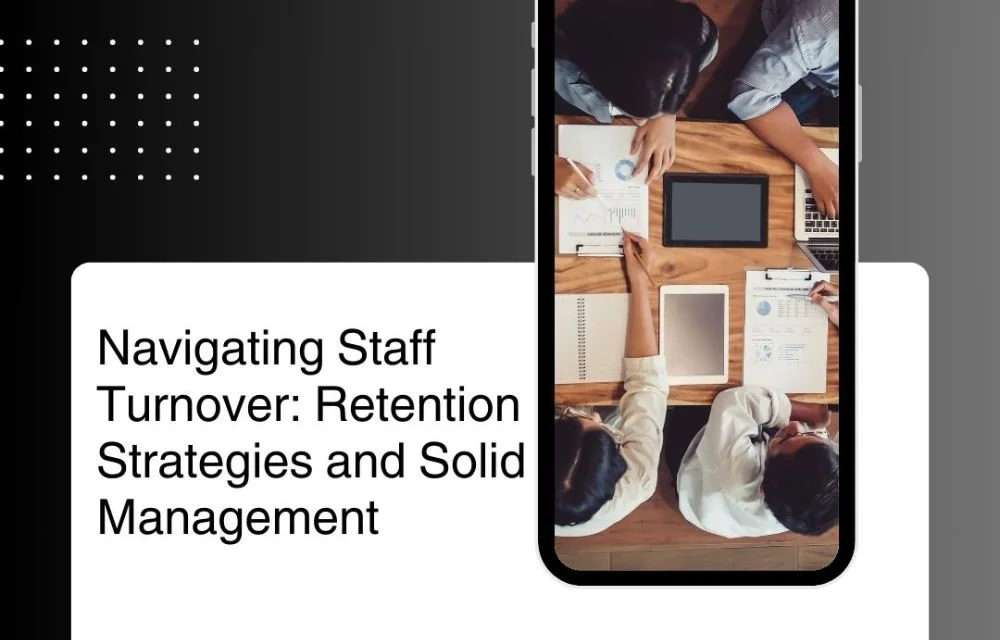Retention through solid management strategies
Staff turnover is a persistent challenge faced by companies across industries. It’s not uncommon for employees to seek better opportunities elsewhere, leaving employers grappling with the repercussions of frequent departures. Understanding why staff members choose to leave and how management can effectively motivate and retain them is essential for fostering a stable and productive workforce.
Why Do Employees Leave?
There are various reasons why employees might decide to leave their current company, including:
- Lack of Career Growth: When employees feel stagnant in their roles with limited opportunities for advancement, they may seek greener pastures elsewhere.
- Poor Work-Life Balance: Excessive workloads, unrealistic expectations, or an unsupportive work environment can lead to burnout and prompt employees to seek a better balance elsewhere.
- Inadequate Compensation and Benefits: Competitive compensation and benefits packages are crucial for retaining top talent. When employees feel undervalued or underpaid, they may explore other options.
- Limited Recognition and Appreciation: Recognition for their contributions and achievements is vital for employee morale. A lack of acknowledgment can make employees feel unappreciated and disengaged.
- Toxic Workplace Culture: A toxic workplace culture characterized by micromanagement, favoritism, or lack of transparency can drive employees away in search of a healthier work environment.
Motivating Employees: Strategies for Management
As management, it’s imperative to proactively address these factors to motivate and retain employees effectively. Here are some strategies to consider:
- Offer Career Development Opportunities: Provide employees with avenues for growth and development through training programs, mentorship opportunities, and clear career paths within the organization.
- Promote Work-Life Balance: Encourage a healthy work-life balance by implementing flexible work arrangements, promoting time off, and fostering a culture that prioritizes employee well-being.
- Competitive Compensation and Benefits: Ensure that your compensation and benefits packages are competitive within the industry and reflect the value that employees bring to the organization.
- Recognition and Appreciation: Recognize and appreciate employees’ efforts and achievements regularly. Implement programs such as employee of the month awards, peer recognition systems, or personalized acknowledgments to reinforce a culture of appreciation.
- Cultivate a Positive Work Environment: Foster a positive and inclusive workplace culture where open communication, collaboration, and respect are the norm. Address any issues of toxicity promptly and transparently.
Establishing Solid Management: Key Factors
Building a solid management foundation is essential for effectively addressing staff turnover and fostering employee engagement. Key factors to consider include:
- Clear Communication: Establish open and transparent communication channels between management and employees. Keep employees informed about company goals, changes, and expectations.
- Empowerment and Trust: Empower employees by delegating responsibilities and trusting them to make decisions within their roles. Provide support and guidance when needed but avoid micromanaging.
- Lead by Example: Demonstrate the values and behaviors you expect from your employees through your actions. Lead by example, showing integrity, accountability, and a commitment to excellence.
- Invest in Employee Development: Prioritize employee development by investing in training and skill-building opportunities. Encourage continuous learning and growth to keep employees engaged and motivated.
- Listen and Respond: Actively listen to employee feedback and concerns and take appropriate action to address them. Show empathy and understanding and involve employees in decision-making processes when possible.
In conclusion, addressing staff turnover requires a multifaceted approach that encompasses understanding why employees leave, implementing effective retention strategies, and establishing solid management practices. By prioritizing employee motivation, development, and well-being, organizations can create a positive work environment where employees feel valued, engaged, and committed to long-term success.

